The Fernhurst Society
Newsletter no 46, November 2015
AGM
|
Everyone welcome to our walks and talks – bring your friends and family.
Members free - Non-members £1
| Thu 25 Feb 2016 Village Hall 7.30pm for 8pm |
Domestic bliss in Tudor West Sussex A historical talk by Dr Caroline Adams |
| Thu 28 April 2016 Village Hall 7.30pm for 8pm |
Weald and Downland Museum talk |
| Sun 1 May 2016 Crossfield Car Park 1.30pm |
A Spring walk led by Bob Smalley |
| Sun 15 May Recreation Ground |
Fernhurst Revels |
| Sun 17 Jul Crossfield Car Park 1.30pm |
Bramshott Common – walk led by Pamela Lee of the Haslemere Natural History Society |
Your House is a very, very, very nice house…
The Fernhurst Archive is collecting information on the history of homes in the village whenever they were built - whether it’s 1500AD or the year 2015. If you have looked into your home’s history, or have your deeds, we’d love to make a copy. The Archive is upstairs at the Village Hall and open Tuesdays 2.30 – 5.00pm. If you’d like our assistance to find out more about your home, contact Elaine Ireland via the Society's email.
News from the Fernhurst Archive
Is it one ‘s’ or two?
All in an afternoon’s work in Fernhurst Archive
The Fernhurst Archive is never sure who is going to come up the winding stairs to our room in the village hall on a Tuesday afternoon. Ideally, it is nice to know in advance in order to prepare information, but we are never fazed by unexpected visits, the latest being visitors from Canada – Murray and Sharon Trusler (with one ‘s’), who were visiting the area in search of Murray’s “TRUSSLER/TRUSLER” roots.
Murray’s 3 x great grandparents - John Trusler and wife Jane (nee CHILDS), with brother George Trusler and wife Elizabeth (nee GILBERT) and their large families of children - emigrated to Canada under the Petworth Emigration Scheme* in 1833 on the England.
Out came the Fernhurst Archive’s lists of baptisms, marriages and burials for “Trus(s)ler” and other information to show the visitors, which were copied for Murray and Sharon to take away.
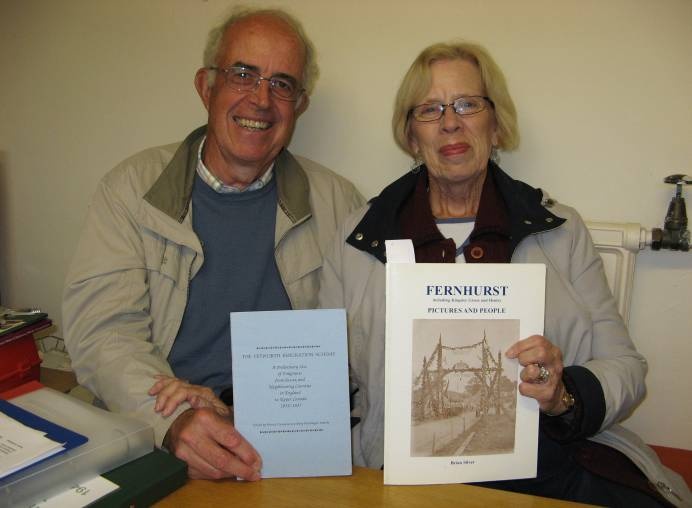
Murray and Sharon Trusler at Fernhurst Archive
Directions to a cottage on Bexley Hill, which was inhabited circa 1600s to early 1900s by Trus(s)ler families, caused a little amusement. “Was the road narrow?” asked the visitors. Yes! “Was the road steep?” Yes! Happily, they found Nightingales from our directions and were delighted when the owners invited them to coffee there the next day.
A quick email from the Archive later that evening to John Trussler and wife Sue (Fernhurst Society members) resulted in a long lunch at the Red Lion the next day for John, Sue, Murray and Sharon; chatting about Trus(s)ler relations.
Below is the email received from Murray and Sharon following their meeting with John and Sue.
Hi Brenda How nice to hear from you. Thank you! Thanks too for arranging for John and Sue Trussler to email us. We want you to know about all that has happened since yesterday. After all your advice and that of your colleague we headed out to Lickfold Inn for dinner. There, right at the village green was a sign to Bexley Hill. Up we went and found Nightingale cottage. No one was home but Tuesday late afternoon was beautiful and so we wandered a bit outside and took some beautiful photos. I also left a note on the door saying that we were staying at Colliers Farm. Then we had a delightful evening and dinner at the Lickfold Inn. When we returned to Colliers Farm B&B, Tori the owner of Nightingale's had called. We called back and went and had a delightful tour and coffee at 'the cottage' this morning. Then when we got to our room at the B&B and turned on our computers, there was an email from John and Sue (Trussler). We arranged to meet them for lunch today at The Red Lion. What a delight!!! We all thoroughly enjoyed our time together – which lasted until after 3:30 pm. It was great! Thank you for all your tips and help and links you provided. Now tonight we are dining at the Spread Eagle in Midhurst. We haven't been to the Cowdray ruins yet – but hope to tomorrow. Thanks again! Have a good day! |
* Petworth Emigration Scheme
In the 1830s English parishes and landlords tried to solve problems of rural poverty by assisting people to emigrate to Upper Canada. One successful example was the Petworth Emigration Committee organized by the Reverend Thomas Sockett under the sponsorship of the third Earl of Egremont. The Petworth Committee chartered ships and sent emigrants from England to Canada in each of the six years between 1832 and 1837. In addition to people from its own Petworth area of Sussex, the Committee helped send emigrants from almost 100 parishes in Sussex and neighbouring counties.
Background information to the Petworth Emigration Scheme can be found in books and online including on the BBC website: http://www.bbc.co.uk/legacies/immig_emig/england/surrey_sussex/article_1.shtml and http://www.petworthemigrations.com/
Brenda Newman
Reviews of recent Fernhurst Society events
27 October 2015 Fernhurst goes back to the 1940s!
The Village Hall was packed as the Fernhurst Archive turned the clock back to the 1940s with a display of photos, documents, programmes, ICI PP memorabilia and, star attraction, a WW2 canning machine. Elaine Ireland made delicious ginger biscuits and oat cookies from a wartime cookbook and these were enthusiastically sampled.
Christine Maynard talked mainly about the domestic life of a typical family, the experiences of a pair of young brothers evacuated from south London and the ‘hostel for naughty boys’ at Ropes. Most of the audience had never heard of ‘ticky snack pies’, a welcome weekly treat during the war, as long as you didn’t ask what went into them! Memorable characters were the three Quinnell brothers, Fernhurst’s own ’Private Walkers’ who mysteriously managed to provide seemingly unobtainable treats.
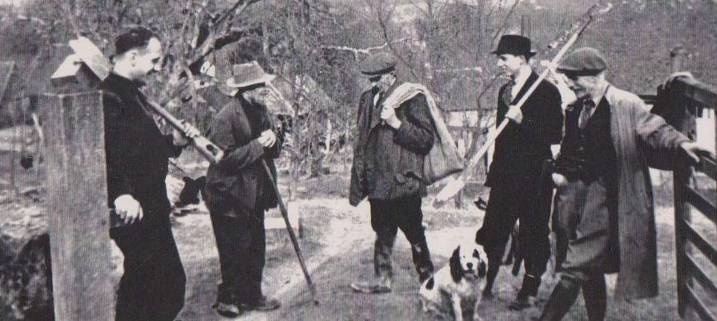
Rabbits were a valuable source of meat. A 1941 shooting party setting off from Henley.
L-R: Raymond Voller, Jimmy Madgwick, Fred Carpenter, unknown, Ed Voller and Betty the dog.
Contemporary accounts of the weekly dances in the Village Hall attended by the American, Canadian and British troops stationed in the village as well as the celebrations on VJ night were vivid and kept the audience enthralled.
Christine Maynard
Iain Brown talked about his own sojourn at Verdley with ICI Agrochemicals before embarking on a brief historical review of the development of Plant Protection Ltd (PPL)/ICI in Fernhurst.
PPL bought 400 acres of the Verdley Estate (including buildings) from Miss Schuster in 1945 - it answered their search for a technical centre in beautiful countryside, close to London, where they could grow a wide variety of crops. The estate was very run down, almost derelict.
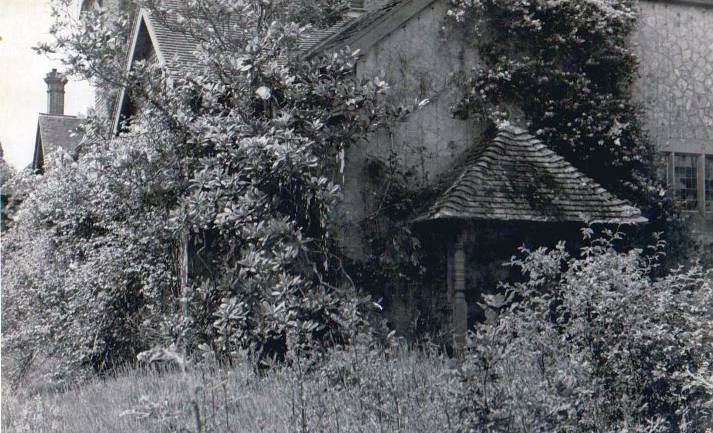
Verdley Terrace in 1945
Most of the land needed ploughing and drainage laying for the clay soil (27 miles of land drains on Hurstfold alone!).
Eating and cooking apples were planted in 1946 (Surney Orchard) and tomatoes, chrysanthemums, carnations and lettuce were grown in newly constructed glasshouses. At that time Courts Farm still kept dairy cattle.
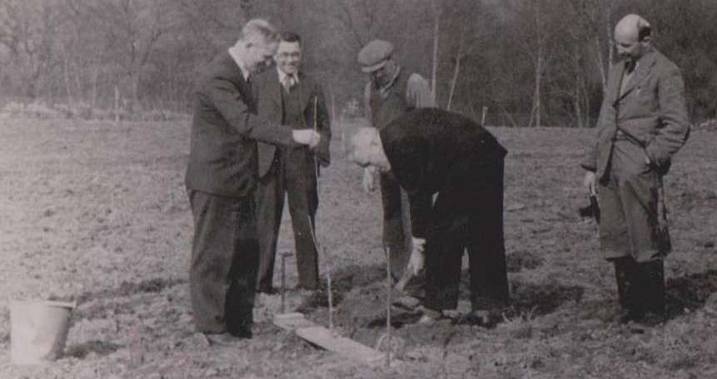
April 1946 – planting the first apple trees
The company staff participated in many community activities such as bonfire nights, Verdley carols and sports. The company was a generous contributor to worthwhile village endeavours. PPL/ICI put Fernhurst on the map as products sent throughout the world were labelled with the Fernhurst address.
Iain went on to talk of the sale of the Blackdown Estate in 1941 and 1950 and the purchase of the Recreation Ground (previously a grazing field).
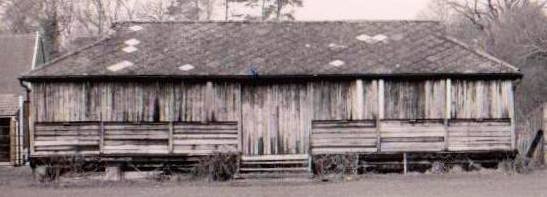
The first cricket pavilion on the recreation ground
He ended with humorous tales from the Minutes of the Football Club and the Parish magazine highlighting the exuberance of the football spectators and lamenting the ubiquitous but near worthless threepenny bit in the Church collection plates.
Iain Brown
29 June 2015
‘The People of the Heath’ – a walk
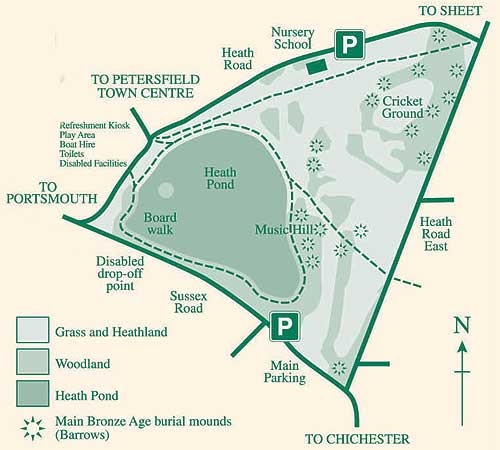 Petersfield Heath has one of the most impressive early Bronze Age cemeteries to have survived in south-east England. Twenty-one barrows (burial and ritual monuments) were mapped in the 1930s and identified as Scheduled Ancient Monuments.
Petersfield Heath has one of the most impressive early Bronze Age cemeteries to have survived in south-east England. Twenty-one barrows (burial and ritual monuments) were mapped in the 1930s and identified as Scheduled Ancient Monuments.
‘The People of the Heath’ is a four-year archaeological project (2014 – 2018) undertaking the first known digs on the site.
Leading us around the site, archaeologist Peter Price explained that each barrow was created either by covering a body or bodies with layers of turf (inhumation) or by covering cremated remains with layers of turf.
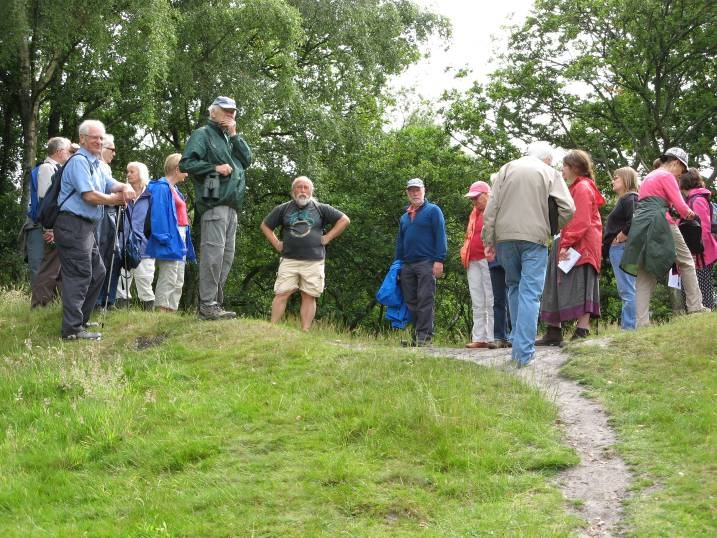
Standing on top of one of the Music Hill Barrows – Peter Price in the centre in shorts.
Photo: Brenda Newman
Petersfield Heath is particularly interesting because of its wide array of barrows - bowl, saucer, disc and bell.
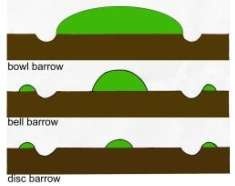 Bell, bowl and disc barrows have a mound and ditch and sometimes an external bank. |
 Saucer barrows have a flattened top and a surrounding ditch. |
Barrow illustrations from http://89.206.186.140/stonehengemap/sites/barrows/all.html |
|
There were signs that at least some of the barrows had featured bare chalk which enabled them to be seen from a distance as a deliberate landscape feature.
Peter suggested the site may have been somewhere people congregated in the winter for reasons including commemoration of the dead and maintenance of the barrows – keeping the white chalk surfaces clear of vegetation. The fish living in the lake would provide a good source of food in winter.
From 1890 until 1997 this special site was used as a golf course by Petersfield Golf Club. One potential barrow, on excavation, was discovered to have been created in the 20th century by the golf course owners.
You can visit the Heath any time – it’s been a public open space since the Council took it back in 1997. If you have a chance to go on one of the open days we highly recommend taking up the opportunity. It is also possible to take part in one of their digs. For further information go to their website: www.peopleoftheheath.com/
Elaine Ireland
20 September 2015
Peter Jerrome’s Petworth – a walk
Peter met us near the Sue Ryder shop, where you can see, in the pavement, a stone flag incised with letters and numbers believed to be a practice stone for an apprentice mason.
Moving on to Golden Square (once the ‘Beast Market’) and Leconfield Hall we learned about the modest Gwenda Morgan (1908 – 1991), a wood engraver whose work reflected life in Petworth and the surrounding area. There are a few of her engravings upstairs in Leconfield Hall. Gwenda’s father managed Austens the hardware shop. Peter told the story of how Gwenda was so incapable of looking after herself on a practical level that she didn’t know how to use a tin opener. Fortunately she continued to live with her stepmother after her father died and the two women, of a similar age, got on very well together. Gwenda left a bequest of £60,000 for the maintenance of Leconfield Hall.
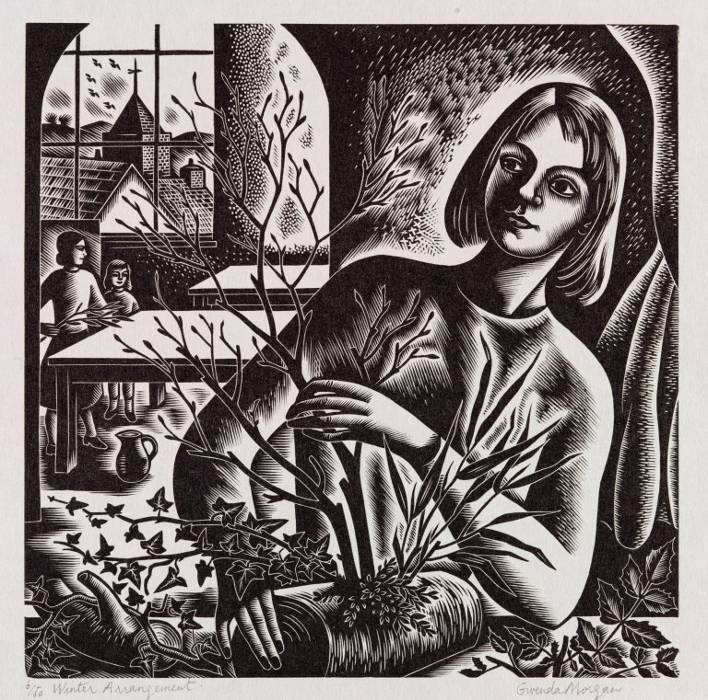 Also in Leconfield Hall, there are portraits of George Garland (1900-1978) and Walter Kevis (1854-1924); the two photographers who provided Petworth with the most complete timeline of rural life photographs in the south-east. After working as a footman to Lord Leconfield, Walter Kevis ran a tobacconist shop and photographer’s studio in Lombard Street between 1878 and 1908. When his nephew, Herbert Earle, took over the shop he discontinued the photography business.
Also in Leconfield Hall, there are portraits of George Garland (1900-1978) and Walter Kevis (1854-1924); the two photographers who provided Petworth with the most complete timeline of rural life photographs in the south-east. After working as a footman to Lord Leconfield, Walter Kevis ran a tobacconist shop and photographer’s studio in Lombard Street between 1878 and 1908. When his nephew, Herbert Earle, took over the shop he discontinued the photography business.
After Earle died in 1950, George Garland discovered around eight thousand of Kevis's glass plate negatives were still in the abandoned studio and in danger of being destroyed. Garland took on the storage of Kevis’s plates and bequested Kevis’s and his own images to West Sussex Record Office in Chichester.
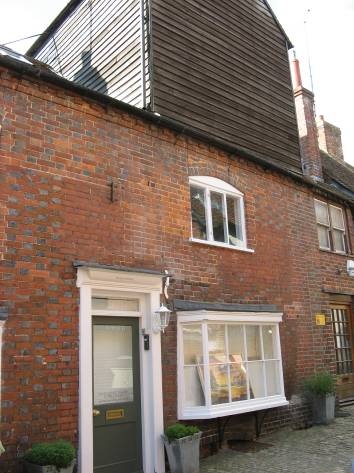 Walter Kevis’s wooden studio Photo: Brenda Newman |
You can see Kevis’s wooden studio perched on top of what is now the ‘Kevis House’ art gallery in Lombard Street. Kevis focussed mainly on portraits. Garland is better known for his images of agricultural life and crafts such as hoop-shaving, charcoal burning and hurdle and cider making. In 1942 two German bombs were dropped on the Petworth Boys School near the junction of North Street and the Horsham Road killing 28 out of the 80 boys and 4 adults. Canadian troops billeted nearby sprung into action to do what they could to rescue the boys and get the wounded to hospital. In 1985 a return visit by 280 Canadian veterans stationed in Petworth during WW2 helped local people talk more openly about the tragedy which they had kept quiet about for over 40 years. |
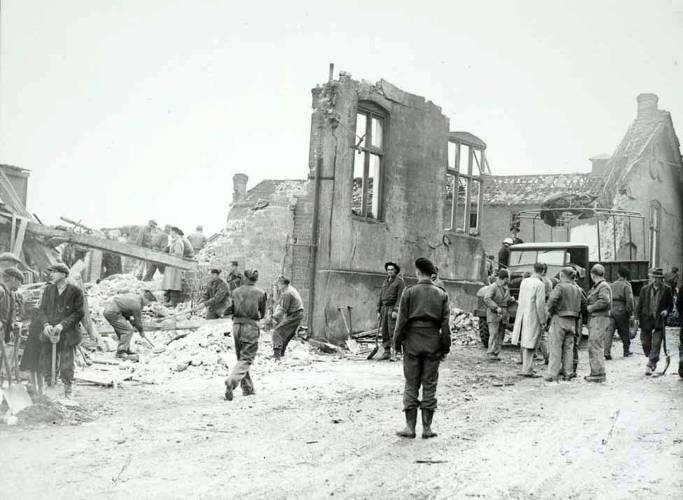
A walk above the beautiful Shimmings Valley and the peaceful Grove Street area, with its numerous Leconfield Estate cottages, led us to our final destination, the Cottage Museum (an old timber-framed building decorated in the style of 1910) where a peek through the 2nd floor bedroom window provided one of the best views in Petworth taking in the rooftops and Petworth House.
Elaine Ireland
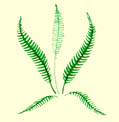
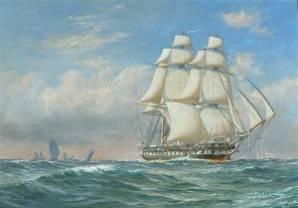 For around 500 years Chatham was key to Britain’s
defence, producing over 500 ships at the cutting edge
of industrial and architectural technology
For around 500 years Chatham was key to Britain’s
defence, producing over 500 ships at the cutting edge
of industrial and architectural technology 